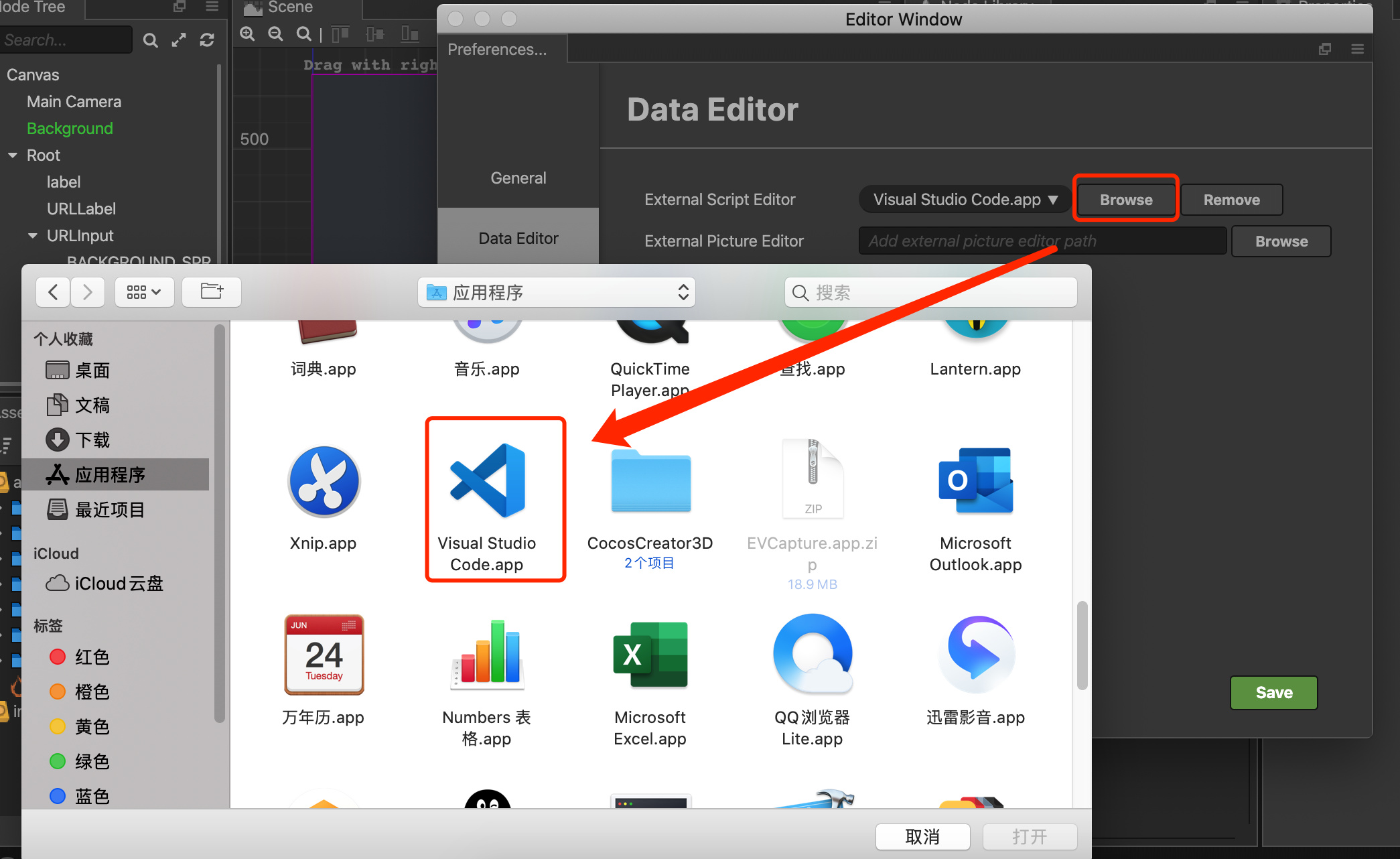- Coco Climber Mac Os Catalina
- Coco Climber Mac Os Download
- Coco Climber Mac Os X
- Coco Climber Mac Os Update
| Developer(s) | Apple Inc. |
|---|---|
| Operating system | iOS |
| Type | Software framework |
| License | Proprietary |
| Website | developer.apple.com/technologies/ios/cocoa-touch.html |
Mac installation instructions. The installer for Cocos Creator for Mac is a.dmg (disk image) file. Double-click on the.dmg file, and drag CocosCreator.app to your Application folder shortcut, or any other location. Then double-click the copy of the CocosCreator.app to get started. Cocoa Packet Analyzer is a native Mac OS X implementation of a network protocol analyzer. CPA supports the industry-standard PCAP packet capture format for reading and writing packet trace files. With CPA you are able to analyze, display and filter packet trace files. CocoaPods is built with Ruby and is installable with the default Ruby available on macOS. We recommend you use the default ruby. Using the default Ruby install can require you to use sudo when installing gems. Whether you use email on Mac’s web browser or the email client’s app for Mac, CocoFax’s email-to-fax works very well. You can read all about CocoFax’s email-to-fax in the next section. Keep reading to find out how to fax on Mac for free without even a modem. 2.2 How to Send a Fax From Mac.
Cocoa Touch is the application development environment[1] for building software programs to run on iOS for the iPhone and iPod Touch, iPadOS for the iPad, watchOS for the Apple Watch, and tvOS for the fourth-generation Apple TV, from Apple Inc.
Cocoa Touch provides an abstraction layer of iOS, the operating system for the iPhone, iPod Touch, and iPad. Cocoa Touch is based on the macOSCocoa API toolset and, like it, is primarily written in the Objective-C language. Cocoa Touch allows the use of hardware and features that are not found in macOS computers and are thus unique to the iOS range of devices. Just like Cocoa, Cocoa Touch follows a Model-View-Controller (MVC) software architecture.
Cocoa Touch contains a different set of graphical control elements from Cocoa. Tools for developing applications based on Cocoa Touch are included in the iOS SDK.
Cocoa Touch in relation to other layers[edit]
iOS, watchOS, and tvOS technologies can be seen as a set of layers, with Cocoa Touch at the highest level and the Core OS/kernel at the bottom.
A hierarchical view of the iOS, watchOS, and tvOS technologies can be shown as follows:
- Cocoa Touch
- Media / Application Services
- Core Services
- Core OS / iOS kernel
Main features[edit]
Some of the main features and technologies of Cocoa Touch are:
- App Extension
- Data Management
- Handoff
- Document Picker
- AirDrop
- TextKit
- UIKit Dynamics
- Multitasking
- Auto Layout
- Storyboards
- UI State Preservation
- Apple Push Notification Service
- Local Notifications
- Gesture Recognisers
- Standard System View Controllers
Main frameworks[edit]
Cocoa Touch provides the key frameworks for developing applications on devices running iOS. Some of these key frameworks are:
- UIKit (based on Application Kit)
- GameKit
- iAd (discontinued in 2016)
- MapKit
- Address Book UI
- EventKit UI
- Message UI
- Notification Center
- PushKit
Coco Climber Mac Os Catalina
Ports[edit]
Microsoft's WinObjC, the GNUstep-based iOS bridge for the Universal Windows Platform, contains a working implementation of Cocoa Touch frameworks like Foundation, UIKit, and MapKit released under the MIT License.[2] One of the UIKit implementations is based on XAML.[3]
Various efforts have tried to bring UIKit, the modified AppKit from Cocoa Touch, to macOS:
- Chameleon is a port of UIKit to macOS from 2014.[4]
- ZeeZide's UXKit is a more recent port of UIKit to macOS. It exists a layer above AppKit and UIKit.[5]
- Apple used a 'UXKit' private framework for a 2015 version of Photos.app.[6]
- Apple made the bridge more official with the 'iosMac' or 'Marzipan' project in 2018, which put an 'iOSSupport' directory full of iOS frameworks in macOS mojave. They were originally restricted from developer use[7] and was finally made official with the release of 'Mac Catalyst' in 2019.[8]
References[edit]

- ^'Cocoa (Touch)'. developer.apple.com. Retrieved 2019-11-21.
- ^'microsoft/WinObjC/Frameworks: Objective-C for Windows'. GitHub. Retrieved 17 February 2020.
- ^'WinObjC: Migrating UIKit Controls to XAML'. GitHub.
- ^Heber, Sean. 'BigZaphod/Chameleon: Chameleon is a port of Apple's UIKit for iOS (and some minimal related frameworks) to Mac OS X.'GitHub.
- ^'ZeeZide/UXKit: Write code that works on both, UIKit and AppKit'. GitHub. ZeeZide. 19 December 2019. Retrieved 17 February 2020.
- ^Hall, Zac (5 February 2015). 'UIKit-like framework called UXKit used in Photos for Mac'. 9to5Mac.
- ^Demasi, Adam (7 June 2018). 'A quick look at UIKit on macOS'.
- ^'Mac Catalyst'. Apple Developer Documentation. Retrieved 17 February 2020.
James Duncan Davidson is the original author of Apache Tomcat and Apache Ant. He was also one of the architects of the Java 2 Enterprise Edition Platform and wrote several versions of the Servlet API and the Java API for XML Processing specifications.
| <?php virtual(“/includes/boxad.inc”); ?> |
Despite this rare pedigree, Davidson hosted a beginner’s session on the developer tools that come free with Mac OS X to an assembled group of around 50 seasoned UNIX and Linux programmers at O’Reilly’s Mac OS X Conference this afternoon.
“When developing Mac OS X, we hoped that they would let us expose the UNIX or release developer tools,” Davidson said. “Well, Apple let us do both.”
Mac OS X has three layers in which an application may run: Classic for legacy applications, Carbon — a hybrid layer that allows existing programs to gain many of Mac OS X’ features quickly — and Cocoa, the objective C based API that unleashes the full potential of Mac OS X.
To create applications on the Classic Mac OS or in Carbon, programmers needed to use some form of Integrated Development Environment such as CodeWarrior.
Well, to create applications for cocoa on Mac OS X, Apple created its own IDE called Project Builder. Just as Darwin is based on an open foundation, Davidson said that Project Builder is based on open standards, including the OCC compiler, the GDB debugger and CVS integration.
Cocoa divides the Graphical User Interface development problem into two parts, the layout of the GUI and the code that dictates how an application runs and manages that GUI.
Coco Climber Mac Os Download
So, Apple created Project Builder and Interface Builder. Project Builder manages all of the files for a project like a good IDE such as CodeWarrior would and also provides debuggers and a text editor. Interface Builder allows developers to construct Mac OS X compliant GUIs and bolt them onto their applications. It’s important to note that Project Builder and Interface Builder work cooperatively to create a complete Mac OS X cocoa application.
“Project Builder was the first IDE I actually liked,” Davidson said.

The IDE is based all in one window, unlike Code Warrior or other IDEs, which use dozens of windows for each development component. If you like, you can configure Project Builder to have multiple windows, and you may use your own text editor.
Interface Builder is a set of four windows. The large top left window shows you what you have, the bottom left has objects, the palette at the top right has hundreds of controls and widgets and the window at the bottom right corner is an inspector to check your actions.
To create a GUI for an application, the developer simply drags the elements they want onto the top left window and goes through a series of steps to log those objects into their code and bolt actions to them. You may create your own controls and add them to the palette, or you can add any number of third party controls to the palette.
Blue lines appear on the window to show developers Apple’s user interface guidelines for particular design elements. For example, if you drag a text box to a window, Interface Builder scores blue lines on the box that are Apple’s prescribed distance from the edges and corners for text. This is intended to be an aid, and Interface Builder will let a developer deviate from these guidelines.
Davidson created a small application as part of his demonstration. He created a text field and a button that changed that text field when you clicked it.
Coco Climber Mac Os X
The presentation also highlighted some of the debugging features in Project Builder. These include traditional runtime debuggers as well as additional debuggers provided to troubleshoot issues specific to Mac OS X. For example, Project Builder includes a Quartz Debugger that highlights in yellow all the changes that the Quartz graphic layer makes in Mac OS X.
Coco Climber Mac Os Update
While this makes the dock appear as a yellow wave and makes a halo appear in the shadows of windows if they are moved, programmers can look at the patterns of yellow to see how they may optimize their code. Davidson created an application that animated a circle, but redrew the screen each frame of the animation. The whole screen flashed yellow when tested under Quartz Debug, which prompted Davidson to tweak his code so that only a rectangle of yellow was shown as the circle moved — saving many processor cycles.
Other developer tools that Davidson liked were FileMerge, which allows you to merge different types of files, and Icon Composer, which allows developers to create icons.
Apple’s Project Builder thus far creates applications in Apple’s frameworks, namely Cocoa, Carbon and AppleScript. There are works in progress to expand this utility to manage projects in camel bones, a cocoa hook to perl, and python and ruby.
Davidson also said that he has had some success with using Project Builder to develop in Java.